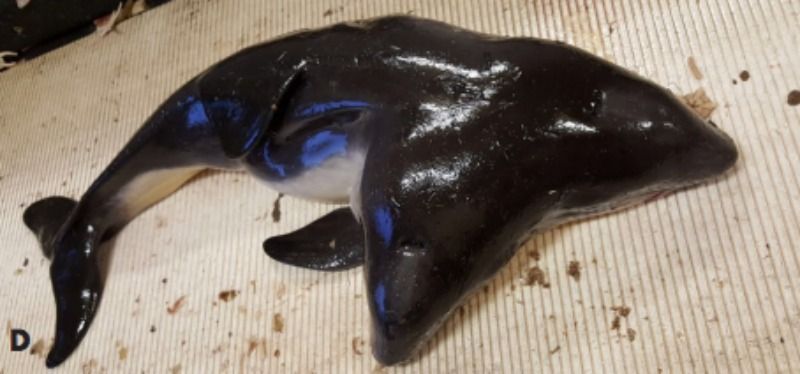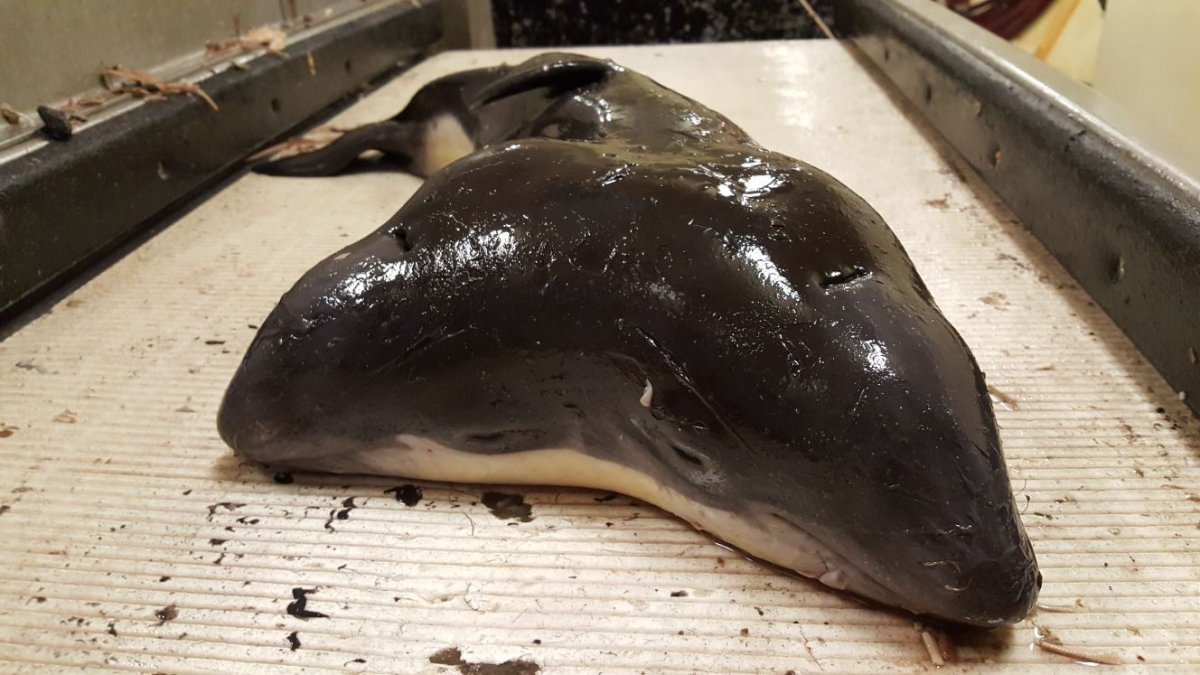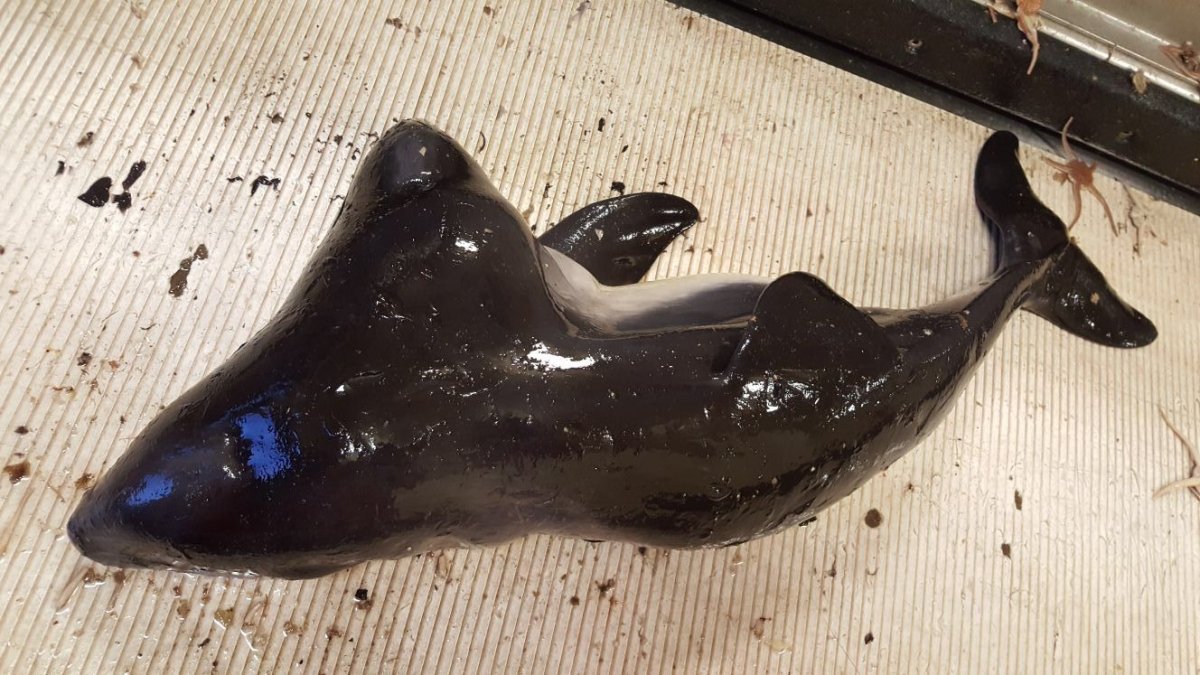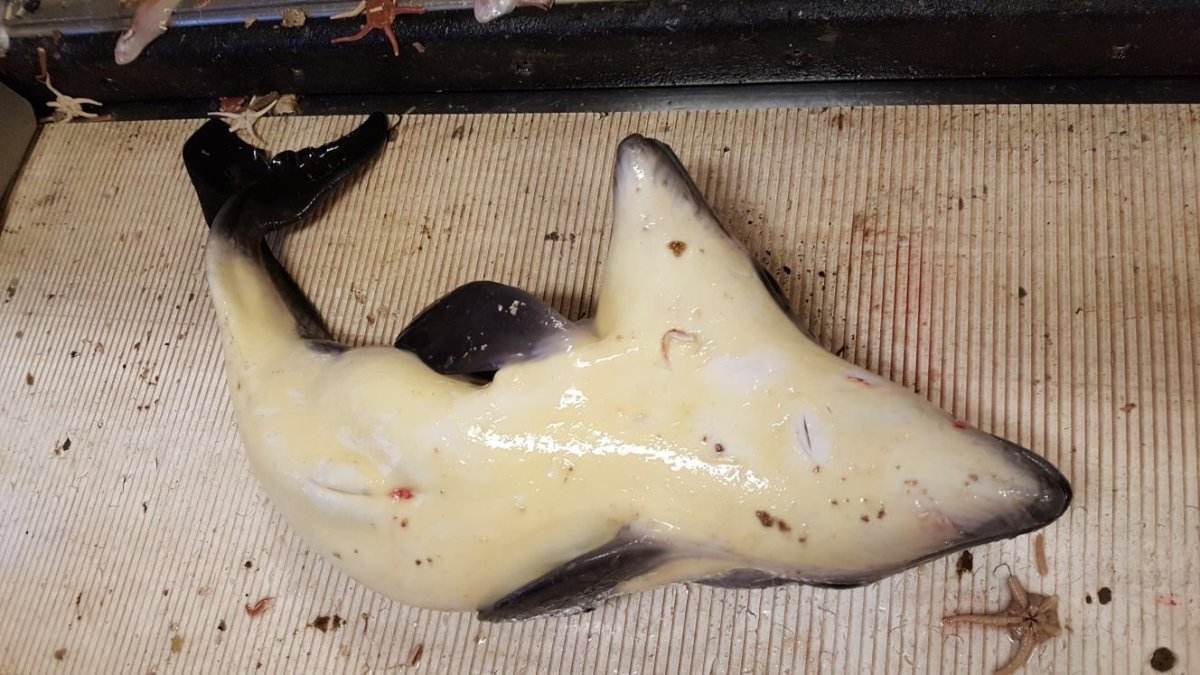
Updated | Scientists in the Netherlands have reported the first known sighting of conjoined twin porpoises. The animals were dead when fishers in the North Sea caught them in a net.
The porpoises were male babies, their age clear by their not-yet-firm dorsal fin, small hairs on their upper jaws and an open umbilicus from where they had been attached to their mother. Their peculiar anatomy was unmistakable: The porpoises each had fully formed heads. Their heads were connected to a single body with the usual two pectoral fins. They were about 2 feet long and weighed about 13 pounds. They were found about 15 nautical miles (about 17 regular miles) west of Hook of Holland, a small town in the southwestern corner of the country.
According to a report about the porpoises by Erwin Kompanje, a scientist at the Natural History Museum of Rotterdam, and colleagues, the fishers threw the porpoises back into the water because they feared keeping the dead animals was illegal. They did, however, take a few photographs to document their existence.
Normal twinning is extremely rare among cetaceans, the authors of the report note. "There is simply not enough room in the body of the female to give room to more than one fetus," Kompanje told New Scientist. Adult harbor porpoises give birth to one baby every one to two years, on average. The first known instance of normal harbor porpoise twins was reported in 2014.
This report of conjoined twin porpoises is the 10th known instance of symmetrical conjoined twins among cetaceans, the scientific name for the marine animal group including whales, dolphins and porpoises. Such twinning also has been found among baleen whales and toothed whales.
Scientists believe that symmetrical conjoined twins, such as these North Sea porpoises, are the result of either embryonic cells that had been separated fusing together or the incomplete separation of cells from a fertilized ovum. But what causes conjoined twins "remains enigmatic," the scientists write in Deinsea.



This story has been updated with additional images and to emphasize that these porpoises were two animals sharing one body, not one animal with two heads.
Uncommon Knowledge
Newsweek is committed to challenging conventional wisdom and finding connections in the search for common ground.
Newsweek is committed to challenging conventional wisdom and finding connections in the search for common ground.
About the writer
Jessica Wapner is the science editor for Newsweek. She works with a talented team of journalists who tackle the full spectrum ... Read more
To read how Newsweek uses AI as a newsroom tool, Click here.








